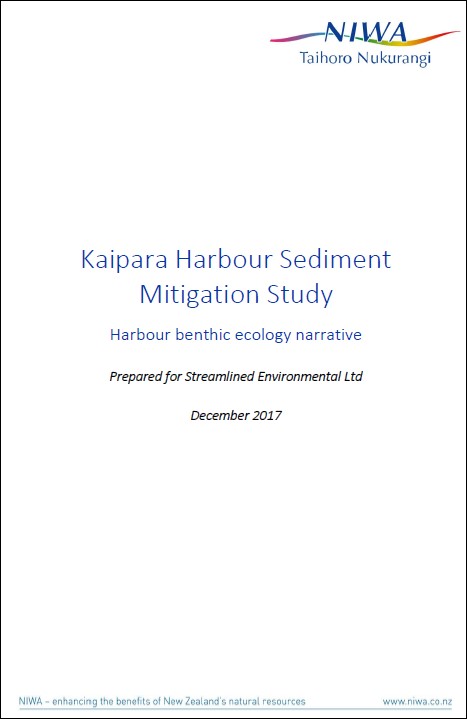Kaipara Harbour sediment mitigation study: harbour benthic ecology narrative
Author:
Drew Lohrer, Streamlined EnvironmentalSource:
National Institute of Water and Atmospheric Research, NIWAPublication date:
2017Topics:
EnvironmentExtract from the Executive Summary:
Northland Regional Council with support from Auckland Council and Ministry for the Environment
have contracted a consortium led by Streamlined Environmental Ltd and consisting of Streamlined
Environmental, Landcare Research, NIWA and the University of Otago, to conduct the Kaipara
Harbour Sediment Mitigation Study.
The first aim of the Study is to develop a catchment economic model for use in assessing the
economic costs and environmental benefits of a range of scenarios for mitigating sediment losses to
rivers and estuaries within the Kaipara Harbour catchment. The second aim of the Study is to develop
a management tool for use in formulating consistent farm-scale sediment mitigation plans. The tool
will be easily usable by land management advisors in the field to identify appropriate actions to
mitigate critical source areas of sediment under different land uses at the farm scale.
This report provides a narrative assessment of how changes in annual average sedimentation rate
(AASR) in the harbour, in response to management actions taken in the catchment, will translate into
changes in harbour ecosystem health and functioning.
Daigneault et al. (2017) used the NZFARM spatially explicit integrated catchment economic model to
predict catchment sediment runoff and associated AASR under each of 12 scenarios (various
combinations of landuse change and sediment mitigation applied in the catchment). Predictions of
AASR were made for 9 depositional basins in the harbour.
The analysis required information on sedimentation thresholds sufficient to cause ecological harm. A
default guideline value of 2 mm/y above the total natural sedimentation rate in each depositional
zone (i.e., total AASR predicted under conditions of full native forest cover and intact wetlands) was
used for this purpose. ...
February 2018
